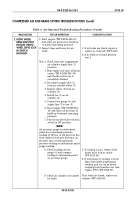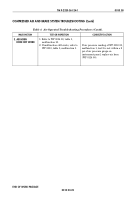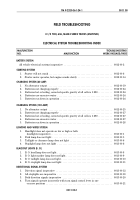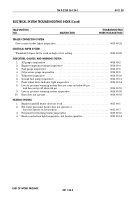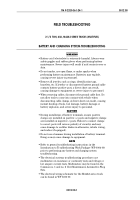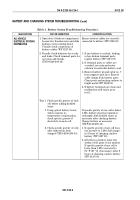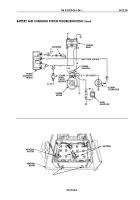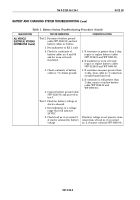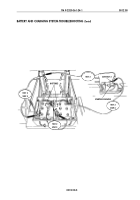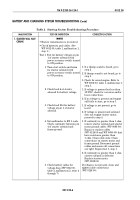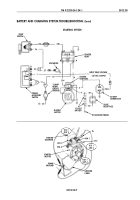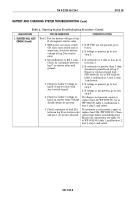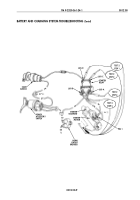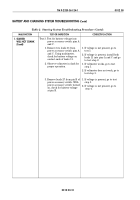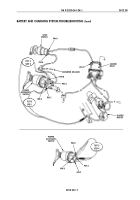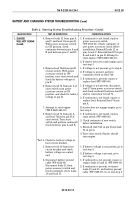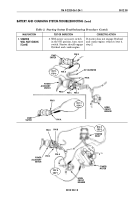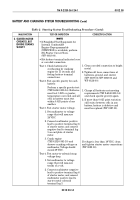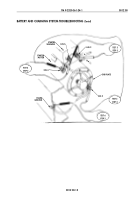TM-9-2320-361-24-1 - Page 190 of 1176
MALFUNCTION
TEST OR INSPECTION
CORRECTIVE ACTION
1. STARTER WILL NOT
CRANK
NOTE
• Ensure transmission is in neutral.
• Check batteries and cables. (See
WP 0012 00, table 1, malfunction 1,
step 1.)
Test 1. Test for battery voltage at pin
1 of starter solenoid with
power accessory switch turned
to ON position.
1. Turn start switch and listen
for starter solenoid with
power accessory switch turned
to ON position.
2. Check lead 6 at starter
solenoid for battery voltage.
3. Check lead 214 for battery
voltage at pin 1 of starter
solenoid.
4. Set multimeter to RX 1 scale.
Check continuity between pin
4 of starter solenoid and
frame ground.
5. Check battery cables for
voltage drop (WP 0012 00,
table 2, malfunction 2, tests 4
through 7).
1. If a thump sound is heard, go to
step 2.
2. If thump sound is not heard, go to
step 3.
3. Check for seized engine. Refer to
WP 0006 00, table 1, malfunction 1,
step 3.
1. If voltage is present but less than
19 VDC, check for corrosion and/or
loose connections.
2. If no voltage is present and engine
still fails to start, go to step 3.
1. If voltage is not present, go to
test 2.
2. If voltage is present and solenoid
does not engage starter motor,
proceed to step 4.
1. If continuity is greater than 1 ohm,
remove starter solenoid and starter
motor ground cables (WP 0088 00).
Repair or replace cables
(WP 0126 00 and WP 0090 00) that
have resistance greater than
1 ohm. Clean cable ends. Clean
connections on starter motor and
frame ground. Reconnect ground
cables and ensure all connections
are tight. Repeat test 1, step 1.
2. If continuity is greater than 1 ohm,
starter solenoid is defective.
Replace starter motor
(WP 0088 00).
If voltage is not present, clean and
tighten cable connections
(WP 0126 00).
TM 9-2320-361-24-1
0012 00
0012 00-6
BATTERY AND CHARGING SYSTEM TROUBLESHOOTING (Contd)
Table 2. Starting System Troubleshooting Procedure.
Back to Top

